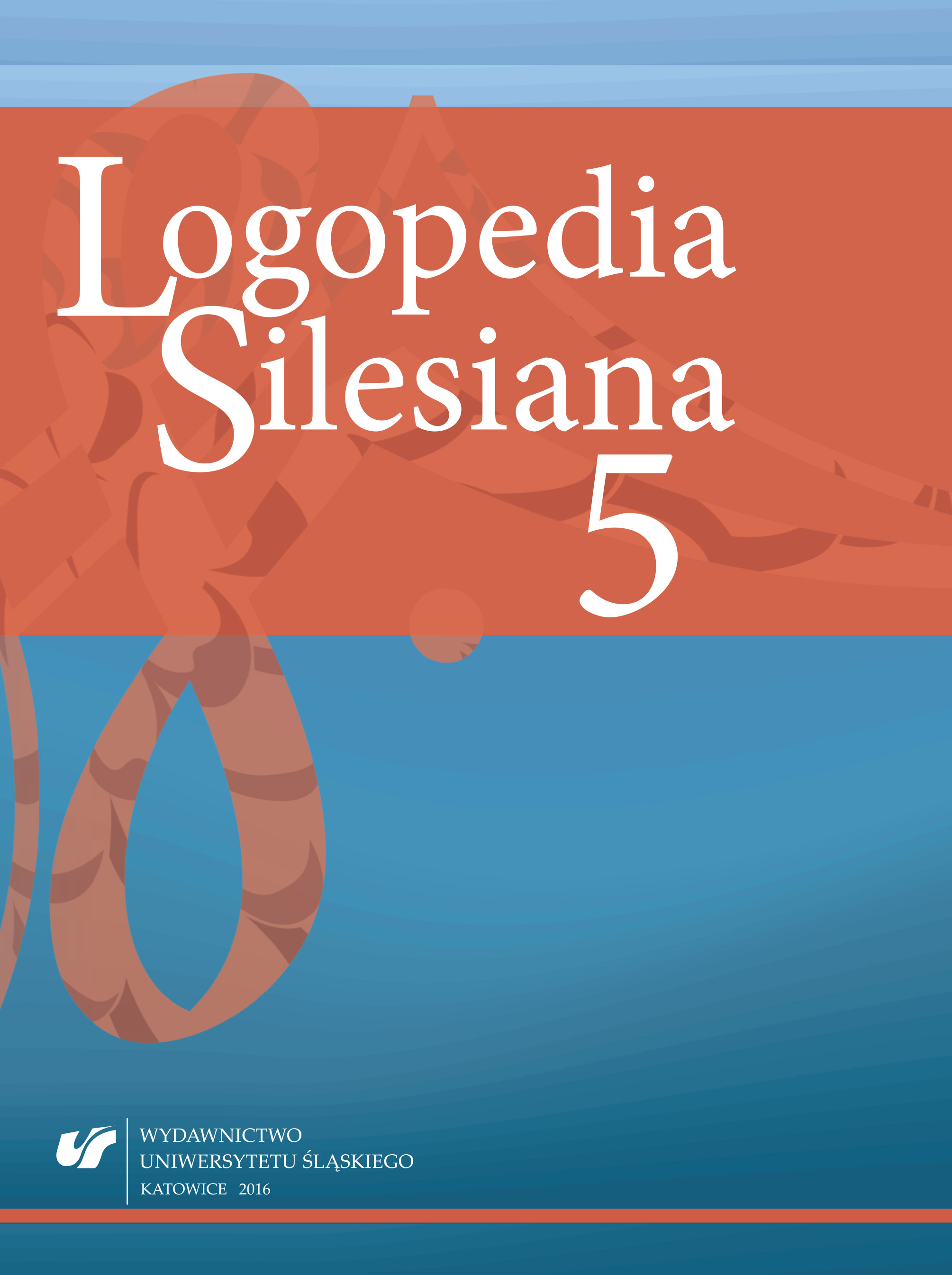Adamczyk B.: Nowa metoda korekcji mowy u jąkających się przy pomocy sztucznego echa. „Otolaryngologia Polska” 1963, t. 17, s. 482–484.
Google Scholar
Adamczyk B.: Zawartość tlenu i dwutlenku węgla w powietrzu wydychanym przez jąkającego się podczas mówienia. „Logopedia” 1992, t. 19, s. 5–8.
Google Scholar
Adamczyk B. et al.: Próba badania współruchów u jąkających się przy użyciu czujnika drgań. „Logopedia” 1978, t. 13, s. 43–47.
Google Scholar
Chęciek M.: Kwestionariusz Cooperów do Oceny Jąkania. Lublin, Fundacja Zaburzeń Mowy 1992.
Google Scholar
Chia Ai O. et al.: Classification of speech dysfluencies with MFCC and LPCC feature. “Expert Systems with Applications” 2012, Vol. 39, p. 2157–2165.
Google Scholar
Codello I.: „Komputerowe rozpoznawanie niepłynności mowy z zastosowaniem transformaty falkowej i sztucznych sieci neuronowych”. Rozprawa doktorska. Gliwice, Politechnika Śląska, Wydział Automatyki, Elektroniki i Informatyki, Instytut Informatyki, 2014. http://delibra.bg.polsl.pl/Content/26034/r.pdf [data dostępu: 14.10.2016].
Google Scholar
Czechowska‑Derkacz B.: Inżynierowie dźwięku i obrazu. „Sprawy nauki” 2003, t. 11, s. 7.
Google Scholar
Grabias S.: Teoria zaburzeń mowy. Perspektywy badań, typologie zaburzeń, procedury postępowania logopedycznego. W: Logopedia. Teoria zaburzeń mowy. Podręcznik akademicki. Red. S. Grabias, Z.M. Kurkowski. Lublin, Wydaw. UMCS 2012, s. 15–71.
Google Scholar
Kobus A. et al.: Speech Nonfluency Detection and Classification Based on Linear Prediction Coefficients and Neural Networks. “Journal of Medical Informatics & Technologies” 2010, Vol. 15, p. 135–144.
Google Scholar
Kochanowski J.: Na zdrowie. W: Fraszki – Pieśni – Treny. Red. A. Pałac, A. Wiedemann. Kraków, Zielona Sowa 2000, s. 38.
Google Scholar
Kuniszyk‑Jóźkowiak W.: Przetwarzanie sygnałów biomedycznych. Lublin, Wydaw. UMCS 2011.
Google Scholar
Kurkowski Z.M.: Próba sylabowa do oceny niepłynności mówienia. Warszawa, Instytut Fizjologii i Patologii Słuchu 2003.
Google Scholar
Mularzuk M. et al.: Program postępowania terapeutyczno‑rehabilitacyjnego wobec pacjentów jąkających się. „Nowa Audiofonologia” 2012, nr 1 (1), s. 94–99.
Google Scholar
Oczadły J.: Pomoce i aparatura stosowane w logopedii. „Logopedia Silesiana”, 2013, t. 2, s. 188–195.
Google Scholar
Szczurowska I., Kuniszyk‑Jóźkowiak W., Smołka E.: The application of Kohonen and Multilayer Perceptron network in the speech nonfluency analysis. “Archives of Acoustics” 2006, No. 31 (4), Supplement, p. 205–210.
Google Scholar
Szczurowska I., Kuniszyk‑Jóźkowiak W., Smołka E.: Artificial neural networks in the disabled speech analysis. “Computer Recognition Systems (Advances in Soft Computing)” 2009, p. 347–354.
Google Scholar
Szczurowska I., Kuniszyk‑Jóźkowiak W., Smołka E.: Detection of syllable repetition using two‑stage artificial neural networks “Polish Journal of Environmental Studies” 2008, Vol. 17, p. 462–466.
Google Scholar
Tarkowski Z.: Kwestionariusz niepłynności mówienia i logofobii (diagnoza i terapia jąkania). Lublin, Orator 2001.
Google Scholar
Woźniak T.: Niepłynność mówienia. W: Logopedia. Teoria zaburzeń mowy. Podręcznik akademicki. Red. S. Grabias, Z.M. Kurkowski. Lublin, Wydaw. UMCS 2012, s. 549–564.
Google Scholar
Woźniak T.: Zaburzenia mowy w schizofrenii W: Logopedia. Teoria zaburzeń mowy. Podręcznik akademicki. Red. S. Grabias, Z.M. Kurkowski. Lublin, Wydaw. UMCS 2012, s. 645–677.
Google Scholar



 10.31261/LOGOPEDIASILESIANA
10.31261/LOGOPEDIASILESIANA